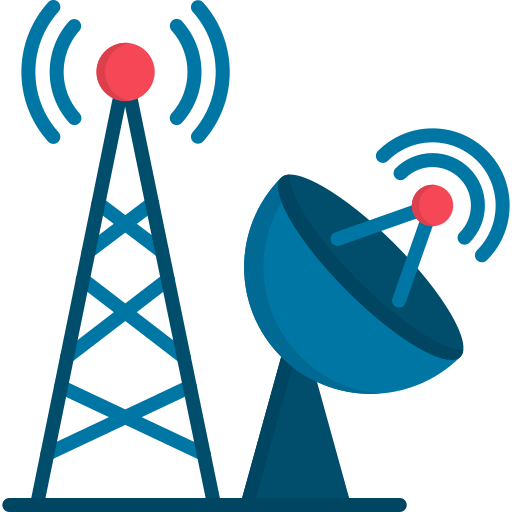Mini Sheet: Telecommunications (Indonesia 2002)
Telecommunications (Indonesia 2002)
17 May (Indonesia ) within release Telecommunications goes into circulation Mini Sheet Telecommunications face value 8,000 Indonesian rupiah
| Mini Sheet Telecommunications in catalogues | |
|---|---|
| Michel: | Mi: ID 2172-2175KB |
Mini Sheet is square format.
Also in the issue Telecommunications:
- Stamp - Telecommunications- Man using cellular phone face value 1000;
- Stamp - Telecommunications- Woman using telephone face value 1000;
- Stamp - Telecommunications- Satellite, computer and dish face value 1000;
- Stamp - Telecommunications- Satellite above Earth face value 1000;
- Mini Sheet - Telecommunications face value 8,000;
Mini Sheet Telecommunications it reflects the thematic directions:
A satellite or artificial satellite is an object, typically a spacecraft, placed into orbit around a celestial body. They have a variety of uses, including communication relay, weather forecasting, navigation (GPS), broadcasting, scientific research, and Earth observation. Additional military uses are reconnaissance, early warning, signals intelligence and, potentially, weapon delivery. Other satellites include the final rocket stages that place satellites in orbit and formerly useful satellites that later become defunct.
Telecommunication, often used in its plural form or abbreviated as telecom, is the transmission of information with an immediacy comparable to face-to-face communication. As such, slow communications technologies like postal mail and pneumatic tubes are excluded from the definition. Many transmission media have been used for telecommunications throughout history, from smoke signals, beacons, semaphore telegraphs, signal flags, and optical heliographs to wires and empty space made to carry electromagnetic signals. These paths of transmission may be divided into communication channels for multiplexing, allowing for a single medium to transmit several concurrent communication sessions. Several methods of long-distance communication before the modern era used sounds like coded drumbeats, the blowing of horns, and whistles. Long-distance technologies invented during the 20th and 21st centuries generally use electric power, and include the telegraph, telephone, television, and radio.
A telephone, colloquially referred to as a phone, is a telecommunications device that permits two or more users to conduct a conversation when they are too far apart to be easily heard directly. A telephone converts sound, typically and most efficiently the human voice, into electronic signals that are transmitted via cables and other communication channels to another telephone which reproduces the sound to the receiving user. The term is derived from Ancient Greek: τῆλε, romanized: tēle, lit. 'far' and φωνή (phōnē, voice), together meaning distant voice.



